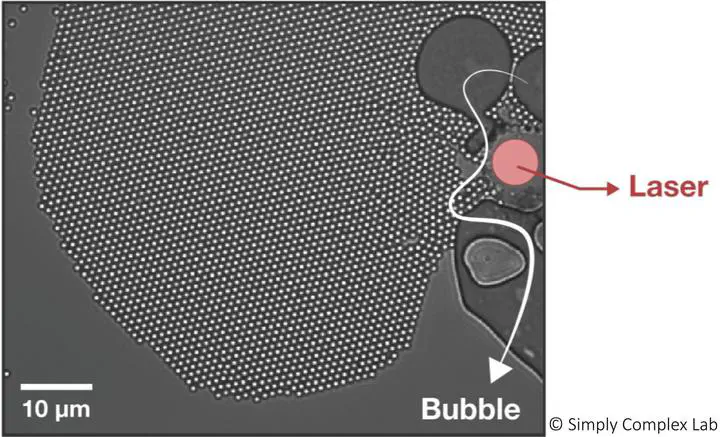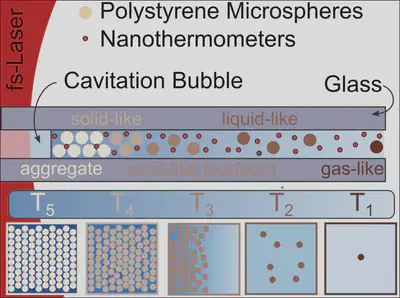Dynamic Self-Assembly

Dynamic self-assembly is a novel approach to construct functional structures from building blocks across dimensional ranges. I contribute to the fundamental understanding of its dynamics as well as to the applications.
Dissipative (or dynamic) self-assmbly (DSA) is an experimental approach to self-assembly using building blocks from atoms or molecules to nano- or even mesoscaleparticles to construct planned (super-) structures. This approach was pioneered by the Simply Complex Lab (SCL) and involves an ultrafast laser which, through nonlinear absorption of its pulses in a liquid medium, is able to induce flow dynamics that ultimatively result in the formation of crystalline patterns.
While the SCL introduced this approach employing mesoscale particles, i.e., mainly micrometer polystyrene beads I contribute to the current research with my expertise in spectroscopy and nanothermometry. Here, I combine various nanomaterials with distinct optical properties with DSA to (i) deepen the understanding of the fundamental physics behind DSA, e.g., by introducing nanothermometry as a measurement modality to the experimental system and (ii) to broaden the application range of the methodology, e.g., by using it to assemble highly functional photonic super structures.

In a novel research branch, I further aim to combine DSA and quantum confined nanoparticles in a quantum liquid such as superfluid liquid Helium to self-assemble photonic super structures that allow for the collective emission of coherent photons, i.e., super-fluorescence or super-radiance.